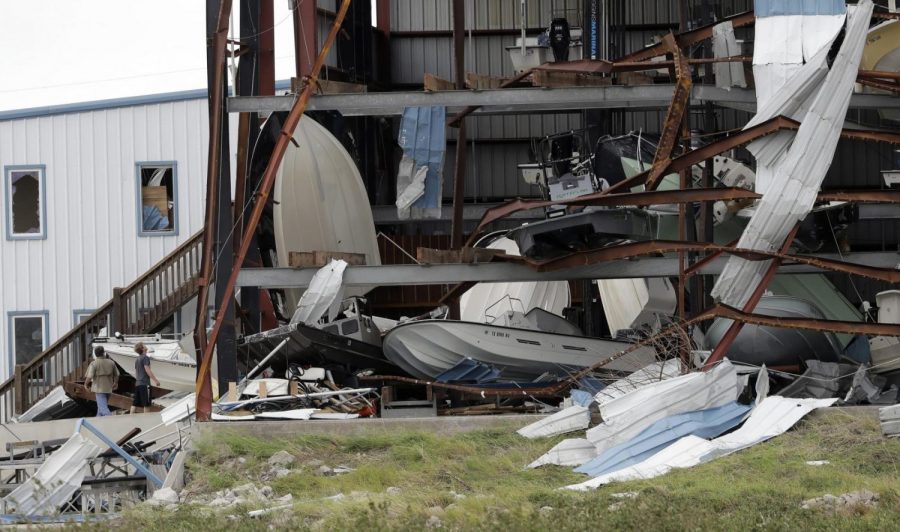The devastating Hurricane Harvey demonstrates the power of social media
Flooded streets, demolished foundations, and damaged homes have been pasted to every front page in the country. The culprit of this unimaginable destruction, Hurricane Harvey, has caused an estimated 150-180 billion dollars worth of damage, rivaling the infamous Katrina, which caused approximately 160 billion dollars worth of damage.
Katrina still stands as the most intense and most damaging hurricane in U.S. history, but when Harvey slammed into Texas shores, no mercy was spared, and many civilians were left devastated. Their homes and belongings were left in pieces, and some irreplaceable memories were lost forever.
As morose as this is, there was a bright side to this tropical storm: society took a step up and aided those in need, mostly through social media. People hopped onto Instagram and Twitter spreading awareness, sharing help lines, and providing links as to where to donate to the cause. However, Facebook was the most prominent social media platform when it came to helping the victims of Harvey.
Keri Henry, a thirty-six-year-old food stylist, was one individual who took on a “do-it-yourself” rescue approach. From the comfort of her own home, Keri used Facebook to provide individuals in Texas with the information they needed to rescue those in peril. She became as efficient as a command center and helped save lives through a screen.
Keri isn’t the only example of an individual stepping up to help rescue efforts. Hundreds of people were organizing rescue missions, donating to efforts like the Red Cross, and sharing vital rescue information– all via social media.
When Katrina hit back in 2005, Facebook was in its early stages, and no other social media platform had even been introduced at that point. The aftermath of the storm was complete chaos. The Superdome was overcrowded, brawls were breaking out over limited supplies, rescue missions were less organized, and help lines were jammed with overwhelming cries for help. While people still donated and victims were still helped, the process wasn’t as “smooth” as it was for Harvey. With the help of social media, rescue efforts were suddenly made more efficient, and information about shelters was shared instantaneously with the tap on a screen.
Social media platforms provided a place for citizens to give a helping hand, eliminating the deep searches for donation sites that were previously necessary. Not to mention the incredible amount of information that was shared via social media about the storm. Citizens were much more informed on the state of the storm and the victims and were able to use that information to help those in need.
Social media has a slightly negative stigma surrounding it; people claim it takes a toll on social skills and builds a wall of separation between the individual and their peers. While in some cases this may be true, as a whole, social media unites people into one society.
As seen with the recent natural disaster, people have the ability to band together and help fix a problem, no matter how big or small. The effect social media completely depends on how it’s used, and Harvey proved how much good it can create.
Social media doesn’t have to be all bad. Harvey has shown that sometimes the difference between life and death is simply a screen.

Krystal is a junior entering her second year on staff. As a part of the Forest Hills Central Rowing Team for the past three years, she hopes to continue...



























































































